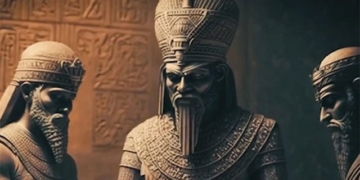In the lizard family, the Komodo dragon is also the fastest species, capable of running up to 20 km/h.
As the largest lizard species in the world today, an adult Komodo dragon averages between 2 to 3 meters in length and can weigh up to approximately 100 kg. The Komodo dragon possesses all the qualities to become one of the most formidable hunters in the natural world.
Komodo dragons were first discovered by Western scientists in 1910. Impressed by their fierce appearance, filmmakers used this animal as inspiration for the villain character in the famous movie King Kong.

Komodo dragons are fierce hunters.
Due to their biological characteristics, Komodo dragons can only live in Indonesia, making it impossible to find these valuable creatures anywhere else on Earth. Research indicates that Komodo dragons are closely related to dinosaurs that went extinct millions of years ago.
Komodo dragons are such aggressive hunters that they can prey on very large animals, such as water buffalo, deer, pigs, and even humans. They can also consume smaller Komodo dragons. Their jaws are strong enough to crush bones, and their stomachs can easily expand to accommodate food weighing up to 80% of their body weight.
However, it is the hunting method of the Komodo dragon that has sparked debate among researchers. For decades, scientists believed that the bites of a Komodo dragon would incapacitate the prey due to infection from the dirt and bacteria in the predator’s saliva.
It wasn’t until 2005 that this mystery was unraveled. It turns out, like its lizard relatives, the Komodo dragon also possesses its own venom.
This venom prevents the prey from clotting blood, paralyzing its nervous system, leading to rapid blood loss, shock, and ultimately death. This allows the Komodo dragon to conserve energy by not having to chase its prey extensively, reducing risk and effort.
A clip filmed at an Indonesian wildlife sanctuary gives viewers a glimpse into the terrifying hunting abilities of the Komodo dragon.
As it is considered a national symbol of Indonesia, the government established Komodo National Park in 1980 for conservation purposes. In the clip, a bewildered deer enjoys a leisurely life, unaware of the imminent danger. Suddenly, the Komodo dragon accelerates, charging forward with swift strides. At this moment, the deer realizes the presence of the predator and attempts to escape.


















































